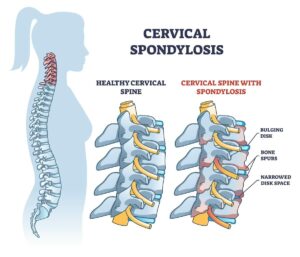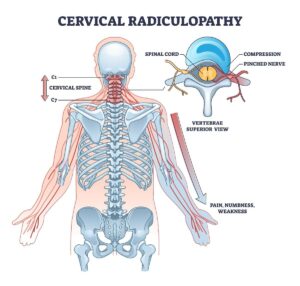Free download: Top 10 Natural & Easy Remedies for Joint Pain from Home. Learn these helpful remedies.
Estimated Reading Time: 5 minutes read
Living with fibromyalgia means dealing with widespread pain, including in the neck. Finding relief can sometimes feel like a never-ending quest. But there’s good news. Certain exercises can help ease this neck pain, making your day a bit brighter. Let’s dive into why fibromyalgia causes neck pain and how simple exercises can offer much-needed relief.
Understanding fibromyalgia and its impact on your neck is the first step toward feeling better. Focusing on exercises designed for fibromyalgia patients can help you manage your neck pain more effectively. It’s about finding what works for you and incorporating it into your routine.
Table of Contents
Why Your Neck Hurts: Causes
Before we get to the exercises, it’s helpful to know why neck pain is a common companion of fibromyalgia:
- Tight Muscles: Just like knots in a rope, your neck muscles get tight and painful.
- Bad Posture: Slouching or bending over your phone strains your neck.
- Stress: It’s not just in your head; it tightens your neck muscles too.
- Not Enough Movement: Staying in one position for too long makes things worse.
- Poor Sleep: Bad sleep positions can leave your neck feeling stiff in the morning.
- Overdoing It: Sometimes, trying to do too much can strain your neck muscles.
Recognizing the Signs: Symptoms
Knowing the symptoms helps you understand when to take action:
- Stiffness: Your neck doesn’t want to move easily.
- Sharp Pain: Sometimes, it feels like a sudden pinch.
- Dull Ache: Or it might be a constant, nagging pain.
- Headaches: Pain in the neck can also lead to headaches.
- Difficulty Moving: Turning your head becomes hard.
- Tingling: Your arms might feel weird because of the neck pain.
Exercises to Relieve Neck Pain from Fibromyalgia
Finding relief from fibromyalgia-related neck pain is all about gentle, consistent exercises. These exercises are specially picked to help loosen tight muscles, reduce pain, and increase mobility without overdoing it.
1. Chin Tucks


- You can perform a chin tuck laying on your back or sitting or standing.
- Gently tuck the chin directly back as if trying to make a double chin. Avoid nodding your head.
- Hold this position for 2 seconds, then slowly relax your muscles.
- Repeat 10 repetitions.
2. Scapular Retraction
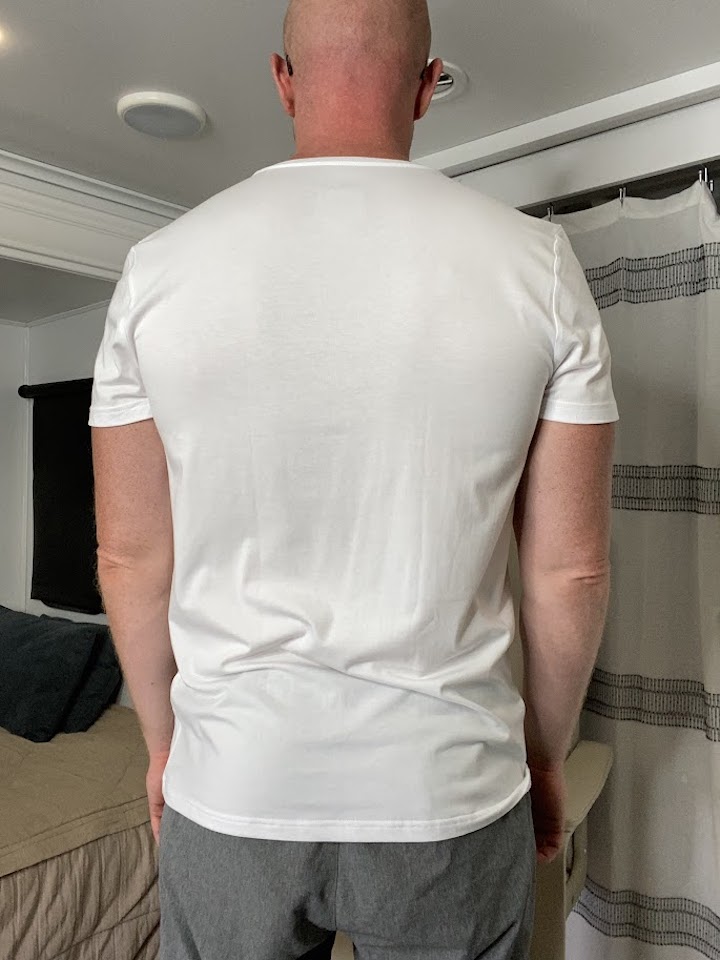
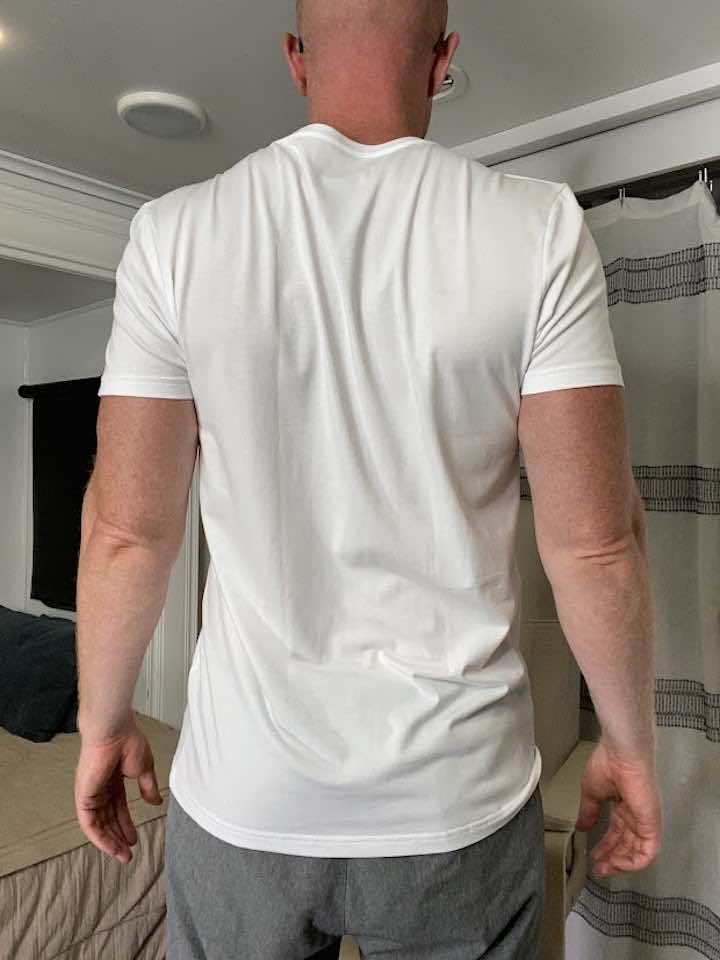
- In a sitting or standing position, try to sit as straight as possible. Aim to position the head in a neutral position as possible.
- Gently pull the shoulders back and squeeze the shoulder blades together.
- Hold for 5 seconds, then relax.
- Repeat 10 repetitions for 3 sets.
3. Rows with Resistance Band
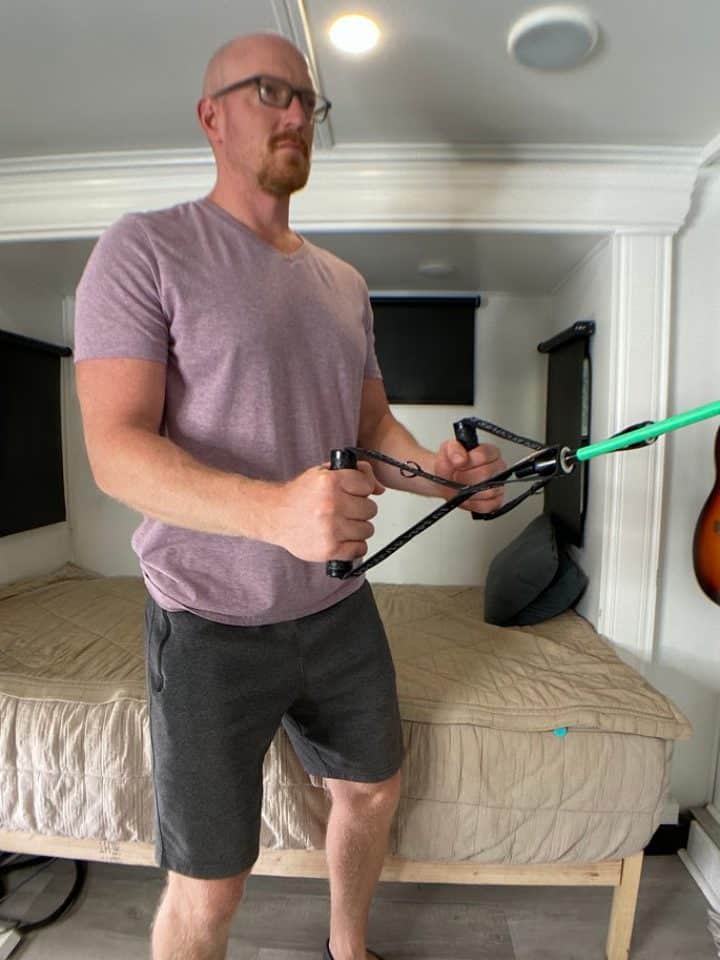
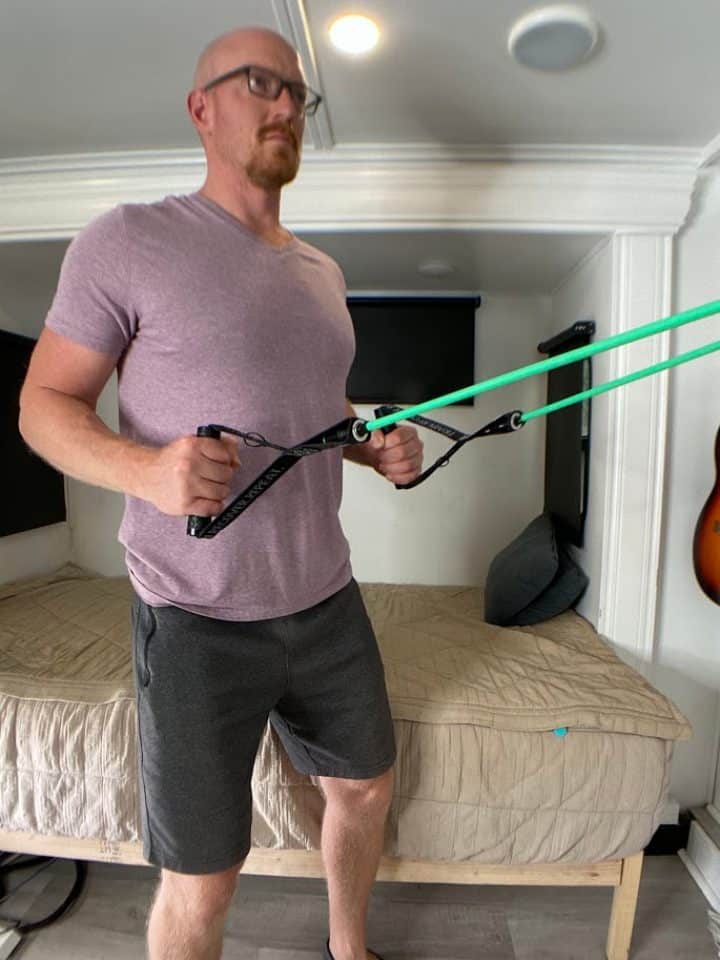
- Hold on to the ends of a resistance band (light, medium or heavy), which you can attach to a door knob.
- Begin with the arms elevated in front of you to shoulder height and the palms facing each other.
- Step back far enough that the resistance bend has a little tension.
- Pull back on the band by bending the elbows and swinging the arms back next to you. Make sure to squeeze the shoulder blades together.
- Hold for 2 seconds, then return to your starting position.
- Repeat 10 repetitions for 3 sets.
4. External Shoulder Rotation with a Resistance Band

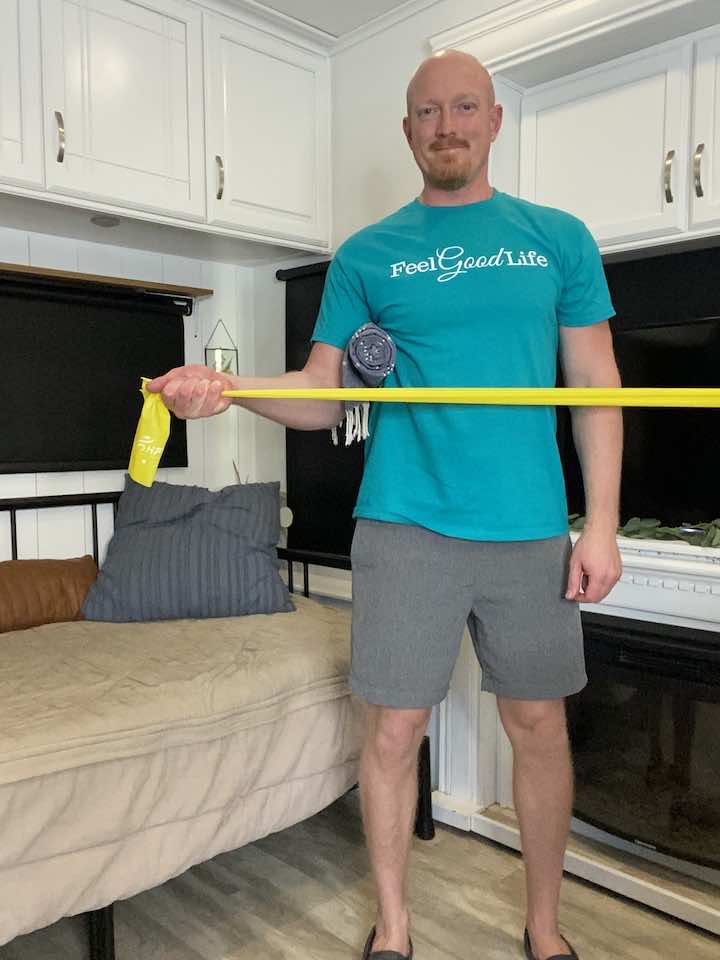
- Attach one end of the resistance band to a secure location, such as a doorknob or post, at the height of your elbow to perform the correct motion.
- Stand facing the band and hold the other end with your hand on the same side, elbow bent at a 90-degree angle and tucked by your side, and palm facing towards your body.
- Keeping an upright posture, slowly pull the band away from your body, rotating your arm outward and away from your torso while maintaining the 90-degree angle of your elbow.
- Hold this position for 2 seconds, then return to your starting position.
- Repeat the movement for 10 repetitions, then switch to the other arm.
- Aim for 3 sets of this exercise.
5. Internal Shoulder Rotation with a Resistance Band
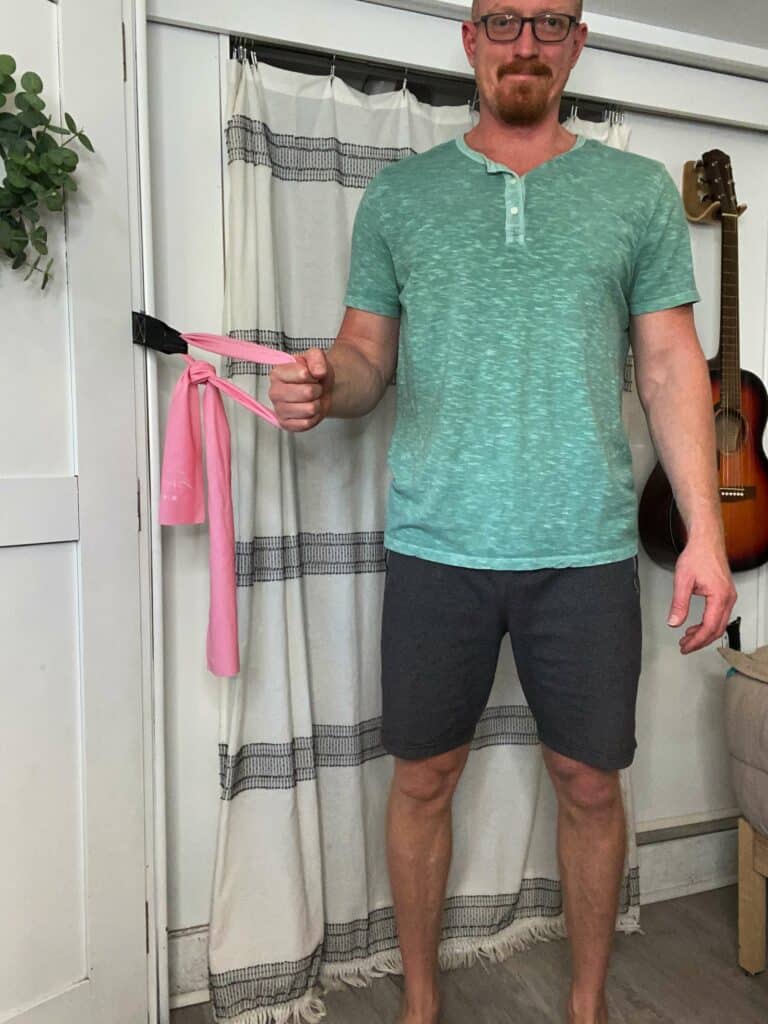
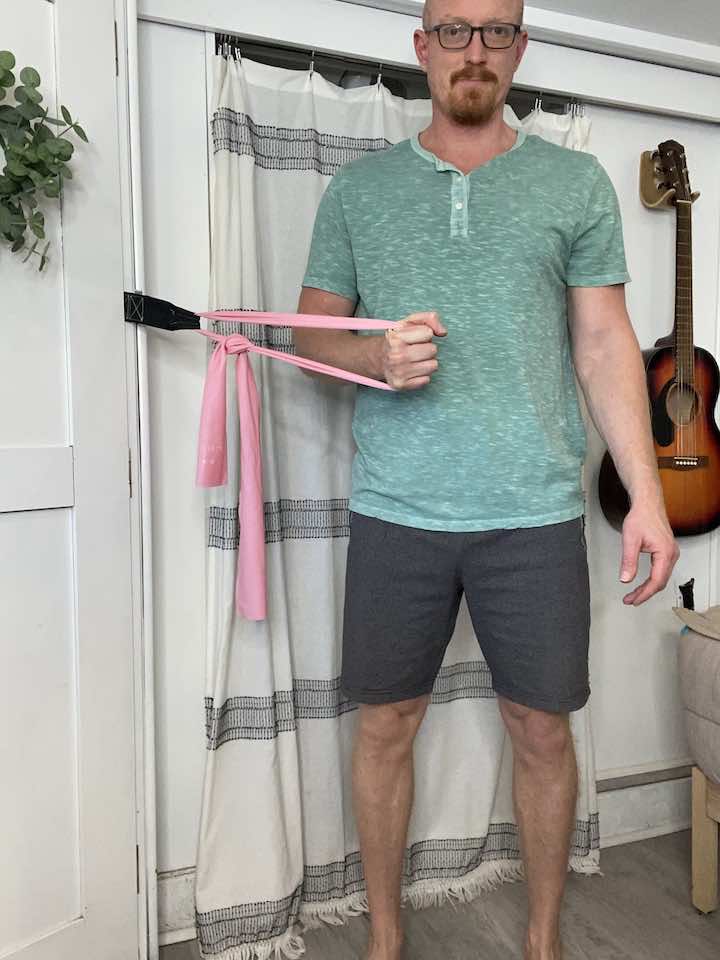
- To perform this exercise, you will need to attach one end of the band to a secure location, such as a doorknob or post, at the height of your elbow to perform the correct motion.
- Keeping an upright posture, slowly pull the band towards your stomach while maintaining the 90-degree angle of your elbow.
- Hold for 2 seconds, then return to your starting position.
- Repeat the movement for 10 repetitions, then switch to the other arm.
- Aim for 3 sets of this exercise.
Stretches for Flexibility:
Stretches can complement your exercises by helping to loosen up tight muscles and improve flexibility.
1. Levator Scapulae Stretch
- Begin by sitting upright in a chair.
- Depending on the side of pain, place that hand on the seat. For instance, if your right side aches, use the right hand.
- With your opposite hand, gently grasp the side of your head.
- Apply a gentle pressure to guide your gaze toward the opposite armpit.
- Hold for 30 seconds and repeat three times.

2. Pec Stretch

- Standing in front of your doorway, raise your arms up to shoulder height like a goalpost. The elbows will be bent with the palms facing forward.
- Keeping this position, rest the arms against your doorway.
- Slowly lean forward into a gentle stretch and hold for at least 30 seconds.
- Repeat this stretch for a total of 3 times.
Tips for Care
In addition to exercises, here are some tips to keep in mind:
- Watch Your Posture: Keeping your spine aligned helps reduce strain.
- Heat or Cold: Applying heat or cold packs can soothe pain quickly.
- Manage Stress: Techniques like deep breathing can relax your neck muscles.
- Sleep Right: A good pillow can make a big difference.
- Keep Moving: Gentle, daily exercise supports muscle strength and flexibility.
- Professional Advice: Always consider consulting a healthcare provider for personalized guidance.
Conclusion
Neck pain doesn’t have to be a constant in your life, even with fibromyalgia. By understanding the causes and symptoms and by integrating simple exercises and care tips into your daily routine, you can manage your pain more effectively.
Remember, it’s about taking small steps toward a bigger goal: feeling better. With patience and persistence, you can make neck pain a less dominant part of your fibromyalgia experience.









